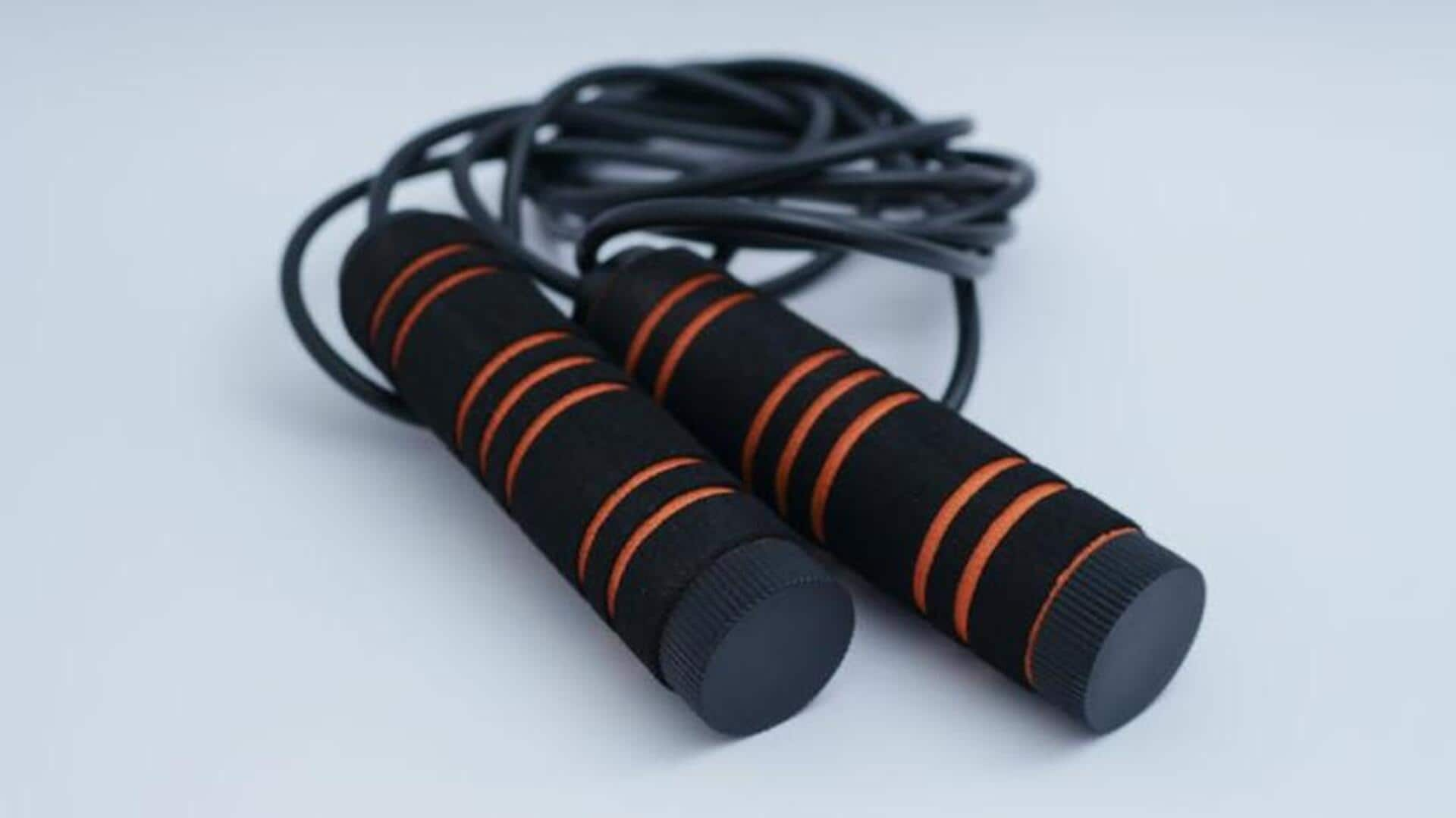
5 ways to elevate energy with jump-rope workouts
What's the story
Jump-rope workouts are a fun way to boost energy and improve fitness. This effective exercise burns calories, improves coordination, stamina, and heart health. Perfect for beginners or anyone looking for workout variety, jump-rope exercises can be tailored to meet your fitness goals. Discover five tips to supercharge your jump-rope workout, from mastering fundamental techniques to adding high-intensity intervals and strength training with weighted ropes.
Foundation
Start with the basics
Master the basic jump-rope technique before attempting complex routines. Stand with your feet together, holding the rope handles. The rope should be touching the ground behind your heels. Use your wrists to swing it overhead and jump just enough for it to pass under your feet. Start with two-minute jumping intervals to improve timing and rhythm, which are crucial for advanced techniques.
Intensity
Incorporate high-intensity intervals
High-intensity interval training (HIIT) is a technique that combines intense bursts of exercise with short periods of recovery. Incorporating HIIT into your jump-rope workouts amplifies energy expenditure and cardiovascular benefits. Simply alternate between 30 seconds of high-intensity (fast) jumping and 30 seconds of rest. Repeat this for ten rounds. This method raises your heart rate and metabolism, supercharging your energy levels for the day.
Strength
Add weighted ropes for strength training
Add weighted jump ropes to your routine for a fun way to amp up muscle engagement. These ropes, ranging from a light one pound to heavier options, work your upper body—particularly arms and shoulders—way harder than regular ropes. As you build strength, you can progressively up the weight. You'll get a full-body workout that tones muscles and improves cardiovascular health.
Agility
Focus on footwork variations
Varying your footwork patterns not only adds interest to your workout but also enhances agility and coordination. Try different jumping styles: Hop on one foot, jump side to side, or bring your knees up high. These changes work different muscles and challenge your balance and coordination, boosting your energy by improving neuromuscular efficiency.
Progression
Set achievable goals
Setting short-term goals is a powerful way to maintain motivation and measure progress in any fitness journey, including jump-rope workouts. Start with achievable targets, like adding a minute to your jumping time each week or learning a new footwork pattern every month. Celebrating these mini-milestones fosters consistency, the secret sauce to building that energy endurance.